Expert’s Rating
Pros
- Stylish design
- Large, clear display
- Smooth software
- 5ATM waterproof
Cons
- Mi Fit app feels a bit clunky in places
- Heart rate tracking not impeccable
- Ceramic edition pushes price up
Our Verdict
The Xiaomi Smart Band 10 cements its place as the best cheap fitness tracker with some nice upgrades, a new (pricier) look and a mix of features and performance that make it worthy of a place on your wrist.
Price When Reviewed
This value will show the geolocated pricing text for product undefined
Best Pricing Today
Price When Reviewed
39.99
The Xiaomi Smart Band 10 arrives as the latest instalment in Xiaomi’s long-running fitness tracker band series, which once again wants to redefine your expectations of what a cheap fitness tracker can be and do.
For the Xiaomi Smart Band 9‘s successor, you can expect a larger AMOLED display, a new look and tracking sensors along with promised improvements to its onboard sports and sleep smarts.
Xiaomi has rarely put a foot wrong with its budget tracker, elevating the design and performance with every new edition. The Band 10 once again looks set to build on that good work to make the latest Band a tracker that continues to punch above its price tag of just £39.
Design & Build
- New ceramic case option
- Supports different wearing options
- Waterproof up to 50 metres
Xiaomi sticks largely to the same look as the Smart Band 9, matching up an aluminium case with a TPU strap and it’s now introduced a new ceramic finish case that’s partnered up with a fluororubber strap.

Mike Sawh
The non-ceramic version comes in black, silver or rose, while the ceramic version comes in pearl white. I can’t vouch for the look of the new model, but I can say that there’s nothing cheap-feeling about the standard model I’ve tested here.
The full colourways options are as follows:
- Midnight Black
- Glacier Silver
- Mystic Rose
- Ceramic Edition Pearl White
Both versions measure 10.95mm thick, so again, the same as the Band 9. They weigh less than 30g without the strap and even with the strap, this is a light tracker to wear and is very unobtrusive to take to bed as well.

Mike Sawh
Xiaomi lets you match up those cases with 11 optional band accessories and that includes a pendant option to let you wear it around your neck. Removing the straps is a breeze and is done by pressing two buttons on the back of each strap.
I was able to switch between living with the TPU band and one of the metallic link bracelet-style straps. I didn’t love the janky design of the metallic one, but it did at least offer a really nice solution to removing links to make it fit better. The TPU, while comfortable to wear, features one of my least favourite button clasp mechanisms that has on the odd occasion, got caught when taking off a t-shirt or jumper.
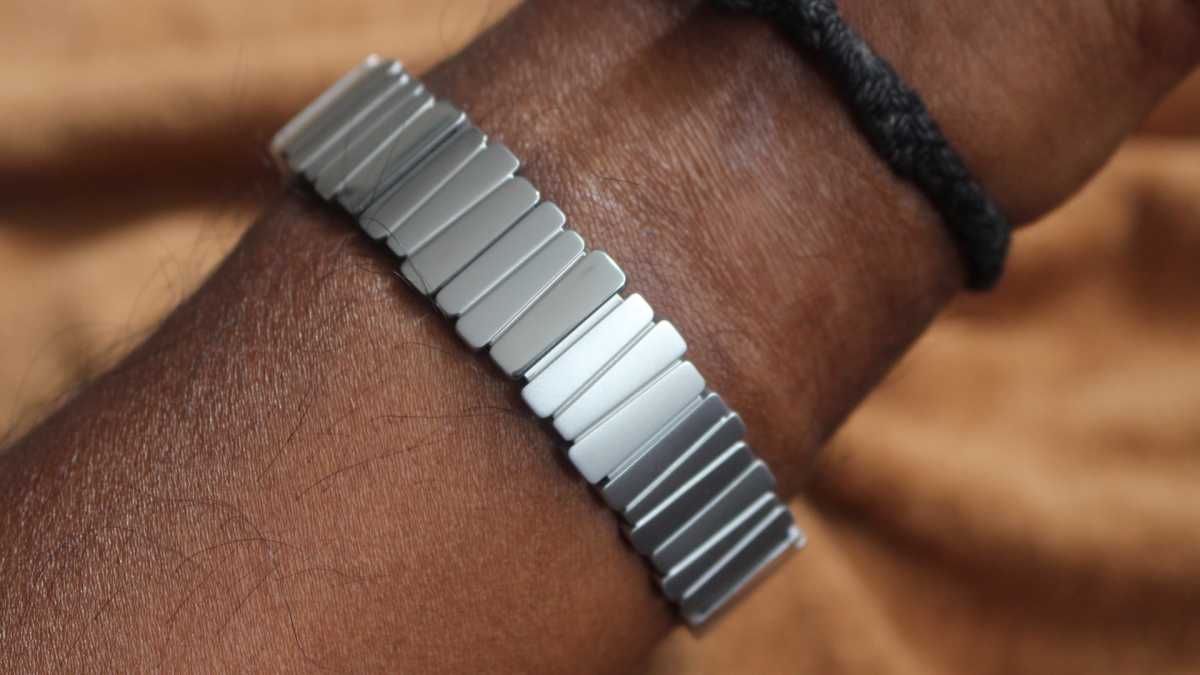
Mike Sawh
A 5ATM waterproof rating does make it safe to go swimming and to keep on in the shower. I’ve taken it for a dip in the pool and it’ll lock that screen before you get into swim tracking mode to prevent accidentally activating the display.
Screen & Audio
- Bigger AMOLED screen, thinner bezels
- Supports always-on mode
- No microphone or speaker included
The most notable design change lies with the screen where Xiaomi has moved from a 1.62-inch AMOLED display to a 1.72-inch, 212 x 520 one. That’s protected by 2.5D reinforced glass. Xiaomi says it’s also notched up the brightness, going from 1,200 nits to 1,500 nits.
growing the display helps to make features like displaying notifications feel a little less cramped
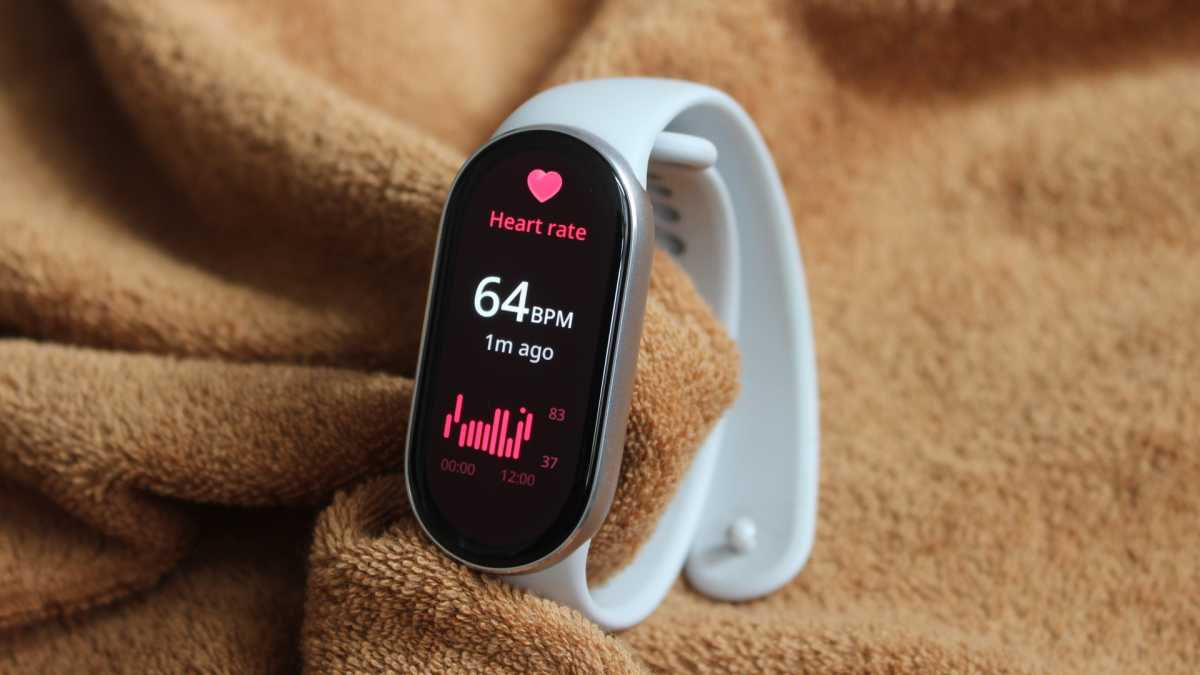
Mike Sawh
The display is supposedly surrounded by thinner bezels than the previous Band, though I’m not sure I could really tell a massive difference. What I could tell is that growing the display helps to make features like displaying notifications feel a little less cramped.
It is a nicely bright screen and you can adjust that brightness manually or leave the Band to do it automatically based on your conditions. You can keep the display on at all times too, with useful scheduled and smart modes available that display mode where it’s most relevant to do so and help keep battery life strong.
Unlike the Chinese version of the Band 10, a microphone and speaker remain missing in action for Xiaomi’s global model, which means missing out on being able to speak to Xiaomi’s Xiao assistant.
Software & Features
- Works with Android and iOS
- Offers music controls and over 200 watch faces
- Xiaomi smart home controls only for Xiaomi smartphones
The look and feel of Xiaomi’s HyperOS 2.0 really feels mostly identical to what we got on the Band 9. It’s a continuation of the good work Xiaomi has done to work on the Band’s slim screen.
The software runs smoothly and is a very easy operating system to get to grips with

Mike Sawh
Swipe from the main watch face in all directions and that is your way to get around. There are no physical buttons, so it’s all about taps, swipes and presses to navigate through menus and select items on screen.
The software runs smoothly and is a very easy operating system to get to grips with. The larger display gives widgets and text more room to spread out to help make things more glanceable.
While this is a fitness tracker first, it’s not enough these days to just focus on that.
While the small design does bring limitations on what Xiaomi can offer, it manages to squeeze in features like the ability to view notifications, weather forecasts, set up alarms, music controls and act a smartphone camera shutter.
A focus mode removes distractions like notifications buzzing, so you can fully concentrate on any important tasks.
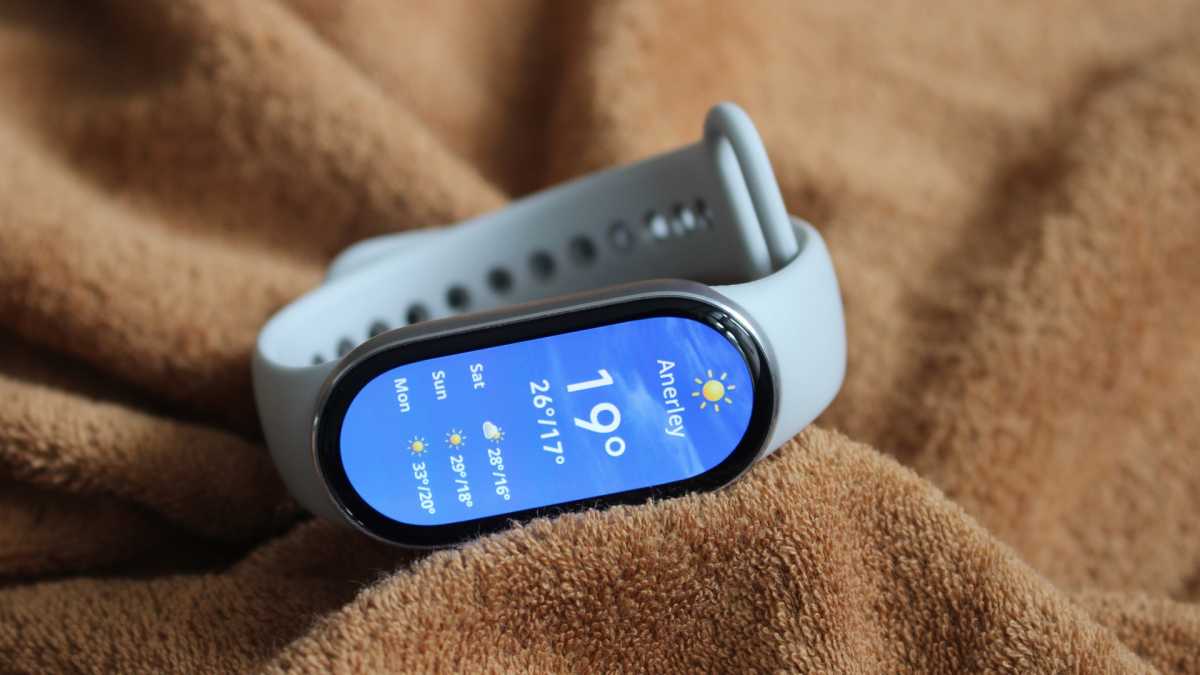
Mike Sawh
If you own a Xiaomi smartphone and some Xiaomi smart home kit, you can use the Band to take control of those smart home devices.
What is here works well. The screen is always going to make it feel inferior to a larger smartwatch display for viewing phone notifications, but for features including the music controls and viewing weather updates, it’s perfectly fine.
I also think Xiaomi does a great job with the quality of watch faces it offers on the Band and how well optimised they are to that AMOLED display.
Some of these features need to be first enabled in the Mi Fitness app, which can be an arduous process at times. It’s also not one of the slickest companion apps available, either.
Fitness & Tracking
- 150+ sports modes
- Improved pool swim tracking
- Added heart rate broadcasting
Tracking your health and fitness is really what the Smart Band 10 is all about.
You won’t find medical-grade sensors or built-in GPS (again). What you do get is enough sensors, modes and insights that can make it more than useful to have on your wrist during workouts, sitting at your desk or when heading for bed.
Xiaomi has moved to a 9-axis motion sensor it says most notably improves swim tracking performance
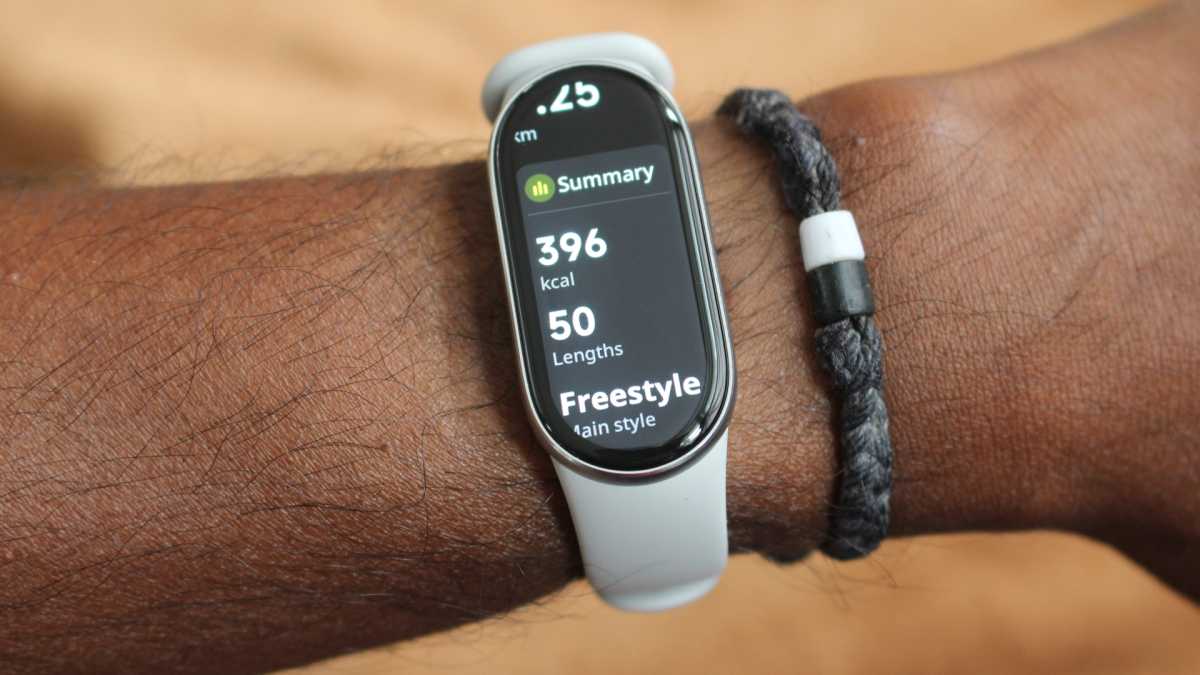
Mike Sawh
Sports tracking is an area where Xiaomi tries to improve the Band’s abilities. You still have connected GPS to use your phone’s GPS signal to track outdoor workouts. You’re also getting hundreds of sports profiles, including indoor ones like rowing and more niche ones like horse riding.
Xiaomi has moved to a 9-axis motion sensor it says most notably improves swim tracking performance and can offer a 96% lap count accuracy.
It now lets you broadcast heart rate data in real-time to other Bluetooth devices and this can be useful if you want to use it with a cycling computer or other connected equipment where you want to keep track of your effort.
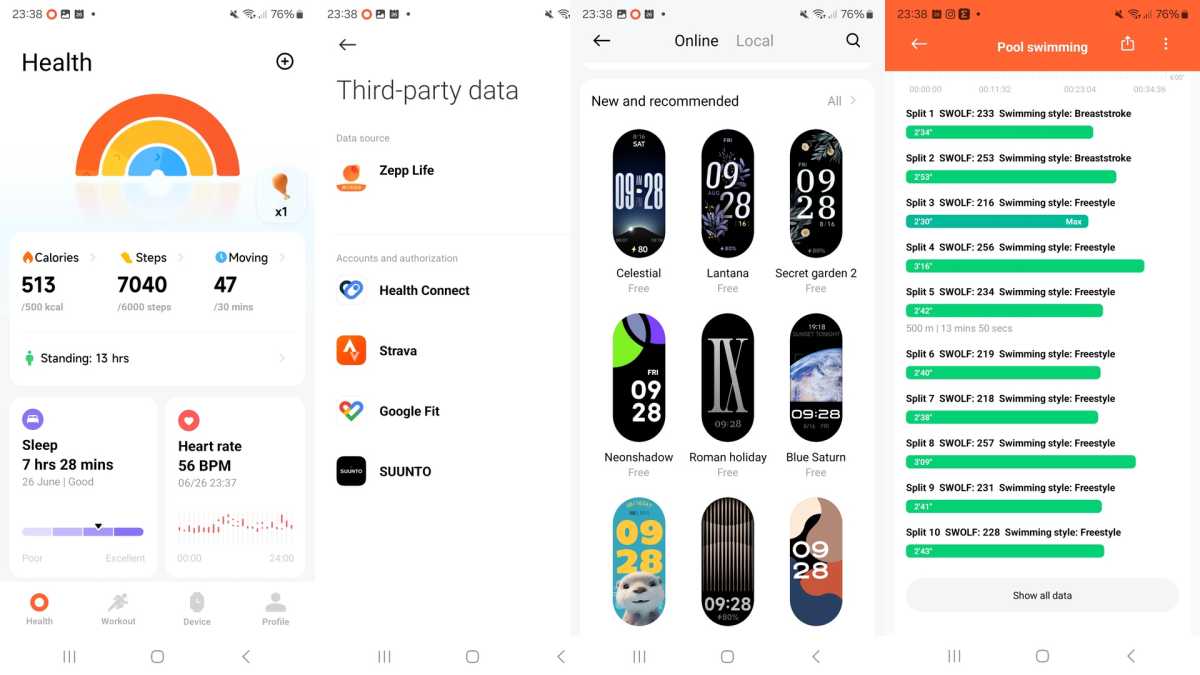
Mike Sawh
I used the Smart Band 10 in the pool against two other swim trackers and it was able to detect stroke type correctly in sessions where I started with breaststroke and then switched to freestyle. The distance tracking was a length out from the other trackers, while metrics like SWOLF scores and calories burned were similar.
The heart rate broadcasting is only useful if the heart rate sensor is reliable, and in my tests, it’s fared pretty well on the accuracy front. I’ve used it for runs, rows and indoor rides against the heart rate monitor chest strap and data like average readings and heart rate graphs were similar.
It did have a tendency to overreport maximum readings, however. It wasn’t massively off, but it was enough to question its reliability for higher intensity workouts.
There are plenty of additional sports watch-style metrics like VO2 Max estimates, as well as training load insights and recovery time recommendations. While I’d take them more as guidance rather than definitive advice, the delivery of the metrics on the watch is nicely done.
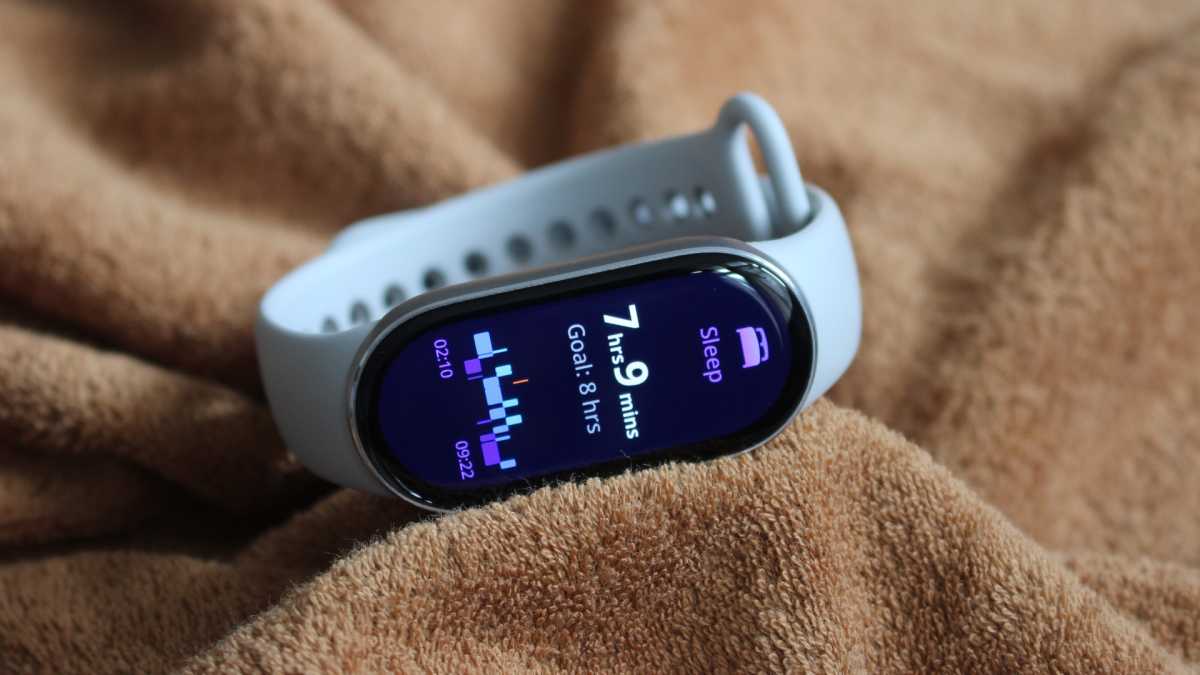
Mike Sawh
When you’re turning to the Band 10 to track daily steps, sleep, stress or keep tabs on your heart rate, it goes about its business in a pretty dependable way. I found step counts were typically around 500-600 steps in range of two other fitness trackers. For daily heart rate tracking, resting heart rate generally skewed higher against other devices, while average readings were typically higher as well.
Xiaomi offers its Vitality scores to provide added motivation to stay active over a week of tracking, but as I’ve said with previous Xiaomi devices, these scores need to feel more ingrained into the daily tracking process because right now, they’re too easy to ignore.
At night, you need to enable advanced sleep monitoring in the Xiaomi app to get a big fix of sleep data. The Band will assess your sleep quality, break down sleep stages, sleep efficiency and produce analysis and advice, which Xiaomi refers to as interpretation and suggestions.
For data like sleep duration and time fallen asleep, the Band 10 held up well against two other sleep trackers. For additional data like the attempts to analyse sleep, the presentation is a bit messy.
Battery Life & Charging
- Same battery capacity as Smart Band 9
- Up to 21 days battery life
- 9 days in always-on mode
Xiaomi sticks to the same 233mAh capacity battery used in the Smart Band 9 and that unsurprisingly leads to a similar battery performance. That’s up to 21 days, which drops to 9 days if you keep the screen on at all times.
It’s not an improvement on the Band 9, but it’s also not a drop in battery life either
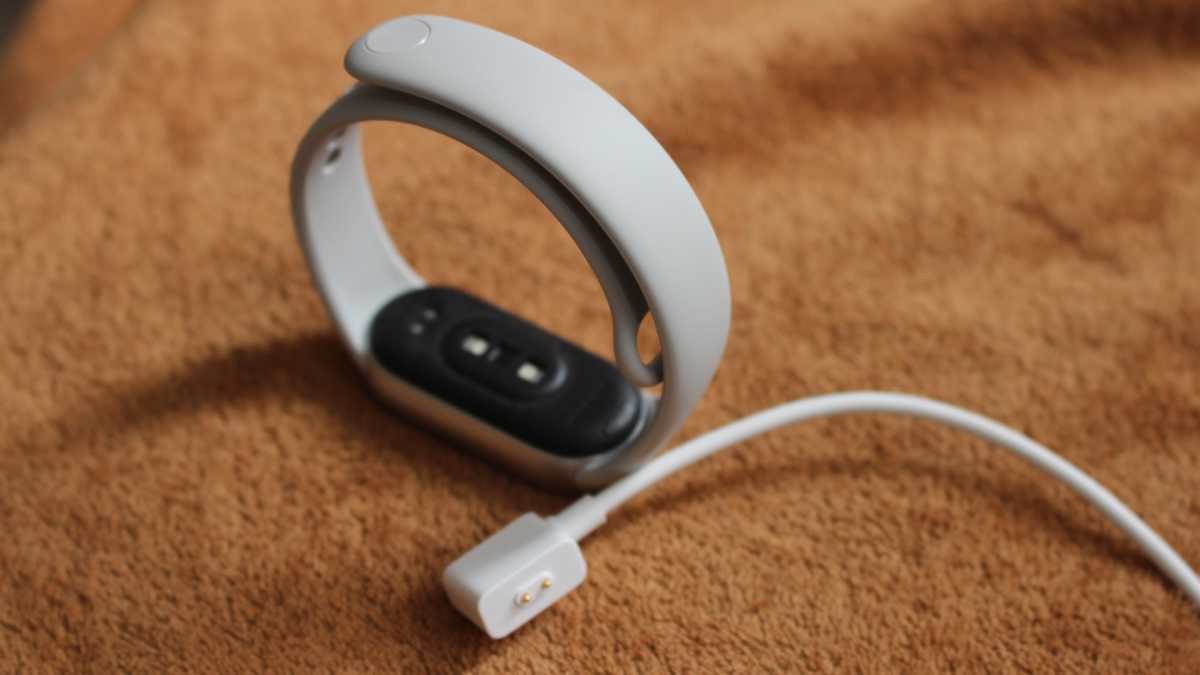
Mike Sawh
I started my testing time using the Band 10 with the screen on at all times and the daily battery drop with some sports tracking on average was 10%. That roughly adds up to the promised 9 days.
Swap for the raise to wake mode and battery performance goes significantly further and will push closer to two weeks. That really does depend if you’re turning on everything the Band 10 is capable of, including its most advanced sleep and health tracking.
It’s not an improvement on the Band 9, but it’s also not a drop in battery life either. What’s more disappointing is that it once again uses a proprietary charging cable that clings to the back of the tracker’s case.
An hour going from 0-100% battery means you don’t have to keep it charged for long, at least.
Price & Availability
The Xiaomi Smart Band 10 was announced on 26th June 2025 in China, landing earlier than the Xioami Smart Band 9, which arrived in July 2024. The Smart Band 10 price in the UK sits at £39.99 for the standard version. That’s up from the Smart Band 9, which cost £34.99 at launch.
You can buy it from the official Mi store as well as retailers such as Amazon.
The new ceramic Smart Band 10 costs £54.99, making it the most expensive Smart Band, though it does come in cheaper than a Fitbit Inspire 3 still ($99.95/£85).
Xiaomi has not revealed US pricing for either version of its new Band.
That pricing does still make it very affordable and matches up with the pricing of the Huawei Band 9 (£49.99) and Amazfit Band 7 (£39.99).
Check out our list of the best fitness trackers to see more options.
Should you buy the Xiaomi Smart Band 10?
The Xiaomi Smart Band 10 is another Xiaomi fitness tracker that looks and feels great both in hardware and software and offers great value if you want something to keep tabs on your activity and general wellness.
If you own the Xiaomi Smart Band 9, then the main reason to upgrade is the larger display and the added 9-axis sensor. Adding a ceramic version brings a more refined option, though the Smart Band 9 does already offer a pretty customizable look. I still think the Band 9 is a great tracker and should hopefully get even cheaper now that the Band 10 has arrived.
It’s a more complete package than its closest budget rivals and shows that while the price has crept up, Xiaomi still reigns as the cheap fitness tracker champ.
Specs:
- 1.72-inch AMOLED display
- Up to 21 day battery life (same)
- Connected GPS
- 9-axis motion sensor
- Optical heart rate sensor
- Sleep and activity tracking
- 150+ sports modes
- 15.95g (without strap), 23.05g (ceramic edition without strap)
- Launch colours: Midnight Black, Glacier Silver, Mystic Rose, Ceramic Edition Pearl White
Leave A Comment
You must be logged in to post a comment.